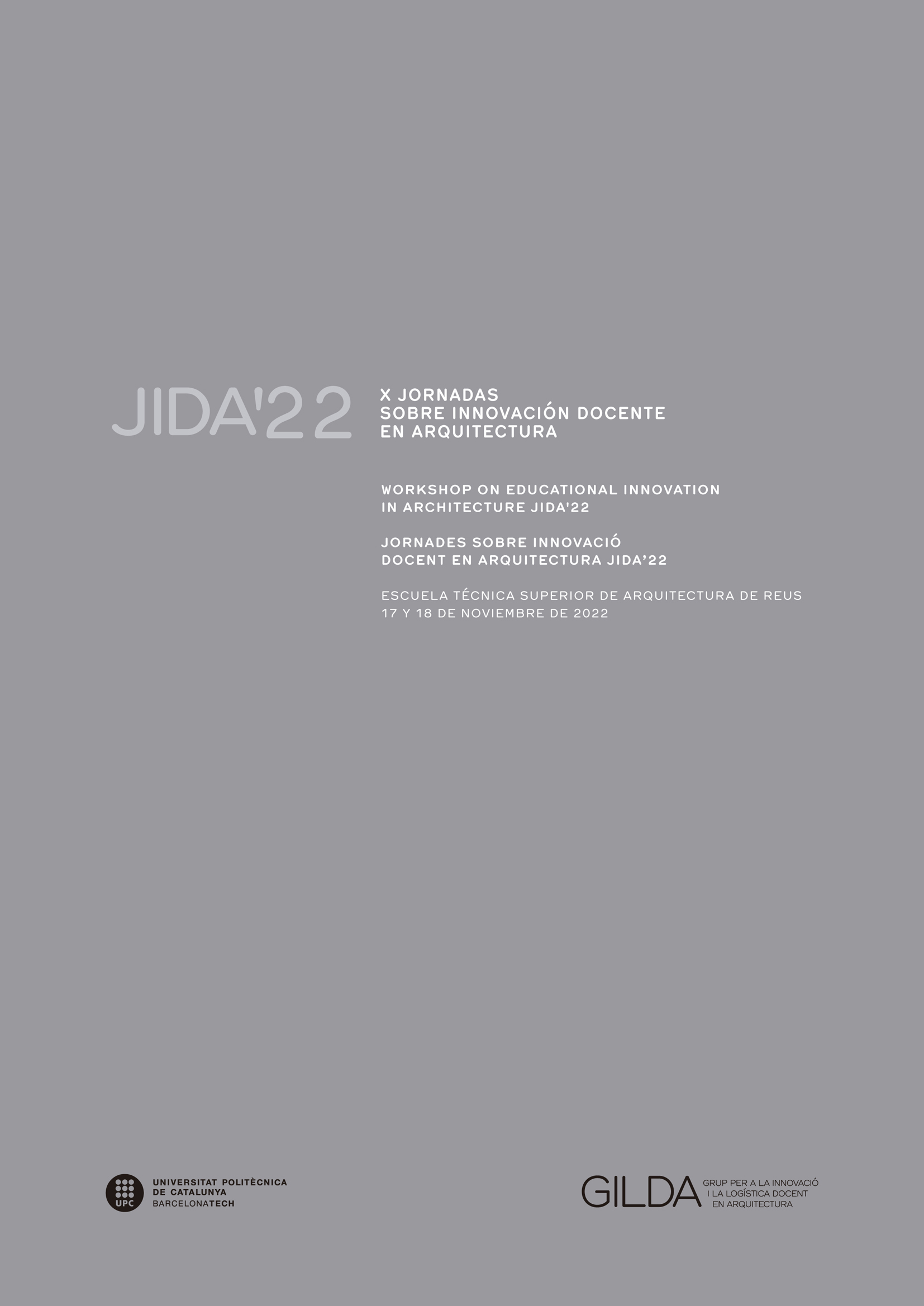Communication and Drawing
experimenting with an Autonomous Learner Model
DOI:
https://doi.org/10.5821/jida.2022.11565Keywords:
architectural graphic expression, drawing, communication, inquiry learning process, project-based learningAbstract
Learning autonomy involves the student as an active agent, makes them assume a dynamic role in the classroom and take responsibility for their learning. Their ideas are the protagonists of the sessions and the teacher limits himself to the prior construction of the experience and its coordination. In this way, students take advantage of their potential development, use their prior knowledge, their intuitive-reflective capacity and the feedback they receive in the classroom. This communication presents a teaching innovation model based on this didactic principle, put into practice in the subject of Drawing 1. Geometry and perception, with students who have just arrived at the Seville School of Architecture. This model includes compare and contrast activities, problem-based learning, and actions to evaluate and verify results.
References
ASTOLFI, J.P. (2004). El “error”, un medio para enseñar. Sevilla: Diada Editorial.
BAIN, K. (2007). Lo que hacen los mejores profesores uni¬versitarios. Valencia: Publicaciones de la Universidad de Valencia.
BONTA, J.P. (1975). “Graficación y diseño” en Arquitecturas bis: información gráfica de actualidad, núm. 5, pp. 2-5.
CHING, F. y JUROSZEK, S.P. (2012). Dibujo y proyecto. Barcelona: Editorial Gustavo Gili.
CHING, F. (2016). Manual de dibujo arquitectónico. Barcelona: Editorial Gustavo Gili.
DELGADO, M. y REDONDO, E. (2004). Dibujo a mano alzada para arquitectos. Aula de dibujo y profesional. Barcelona: Parramón Ediciones.
ESCRIBANO, A. y DEL VALLE, Á. (2008). El Aprendizaje Basado en Problemas. Una propuesta metodológica en Educación Superior. Madrid: Narcea.
FERNÁNDEZ-GÁMEZ, D. y GUERRA-MARTÍN, M.D. (2016). “Aprendizaje inverso en formación profesional: opiniones de los estudiantes” en International Journal of Technology and Educational Innovation, vol. 2, núm. 1, p. 29-37.
FINKEL, D. (2008). Dar clase con la boca cerrada. Valencia: Publicaciones de la Universidad de Valencia.
GIL, J. y PADILLA, T. (2009). “La participación del alumnado universitario en la evaluación del aprendizaje”. Educación XXI, vol. 12, p. 43-65.
GOMBRICH, E.H. (1997). Gombrich esencial. Textos escogidos sobre arte y cultura. Madrid: Ed. Debate., p. 62.
PORLÁN, R. (Coord.) (2017). Enseñanza Universitaria, Cómo mejorarla. Editorial Morata.
POZO, J.M. (2002). Geometría para la arquitectura: Concepto y Práctica. Pamplona: ETSA, Universidad de Navarra.
PRIETO, A. y GIMÉNEZ, X. (2020). “La enseñanza universitaria basada en la actividad del estudiante: evidencias de su validez” en De Alba, N., Porlán R. (Coords.), Docentes universitarios. Una formación centrada en la práctica. Ediciones Morata, p. 128-162.
SALGADO, M.A. (2020). “Narrativa gráfica: el aprendizaje comunicativo del dibujar” en Bardí i Milà, B., García-Escudero, D. (Ed.) JIDA’20. VIII Jornadas sobre Innovación Docente en Arquitectura Málaga. Málaga: Iniciativa Digital Politècnica Oficina de Publicacions Acadèmiques Digitals de la UPC Publicaciones y Divulgación Científica, Universidad de Málaga.



















